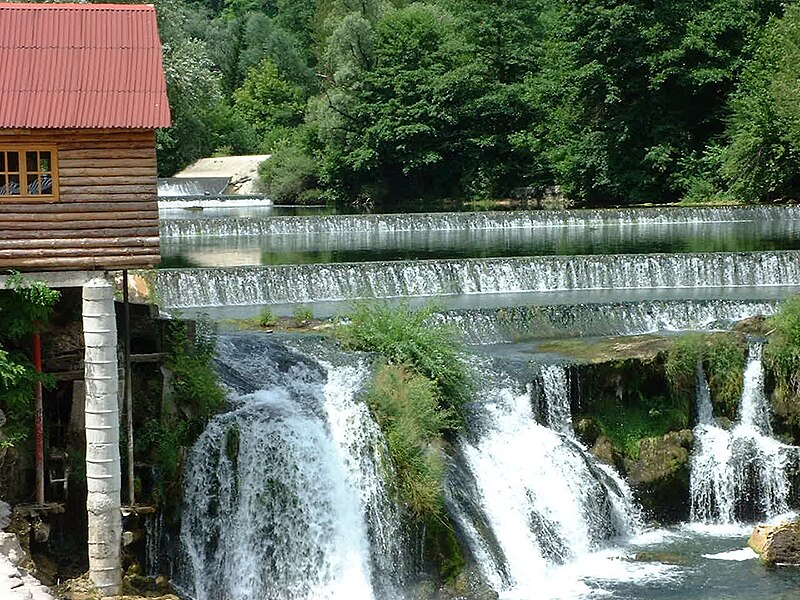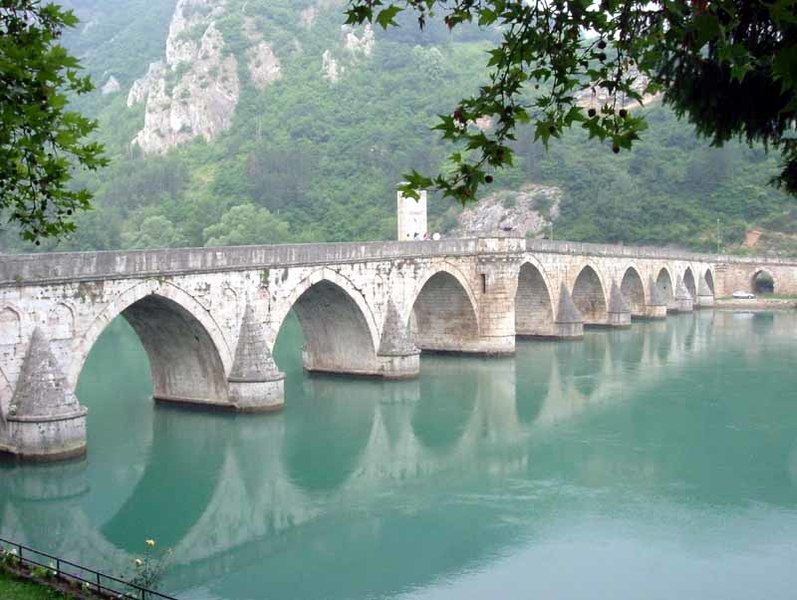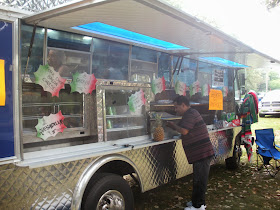The second country in my series of Around the World essays is Thailand, a tropical country located on the Indochina Peninsula in South Eastern Asia. Thailand, at 198,000 square miles (larger than California yet smaller than Texas) is the 51st largest country of the world.
"The earth is the Lord's, and the fulness thereof; the world, and they that dwell therein." --Psalm 24:1
The seventy-six provinces of Thailand cover varied terrain. In Thailand you can find mountains, rainforests, coral reefs, waterfalls, beautiful white sandy beaches, exquisite Oriental architecture, and the ruins of Ayutthaya (once the largest city in the world). The country is bordered by Burma, Laos, Cambodia, and Malaysia,the Gulf of Thailand, and the West Andaman Sea. Thais pride themselves in being the "land of the free;" Thailand is the only country on the Indochina Peninsula never to have been colonized by Europeans.
My Thai Heritage
One reason Thailand fascinates me because it is the land of many of my ancestors. My grandmother Siripon was born in Lamphun, Thailand, the 9th of 10 children. Her father's progenitors belonged to what was once the royal family of Lamphun (Thai provinces had their own dynasties until the national King Chulalongkorn stripped them of their powers in 1897); he worked as a farmer. My grandma grew up on the family farm raising rice, peanuts, soybeans, and peppers, and helping cut sugar-cane. Most of the work was done by hand, but they also had oxen which worked pulling carts.
 |
| Mae Ya Waterfall in Chiang Mai |
When Grandma was 15 years old, she moved to Chiang Mai to live with her sister. When she was a little older she opened a beauty salon and met my grandfather, an American merchant marine, in Bangkok. After they married, they moved to Ubon where my mother was born. Shortly before the outbreak of the Vietnam War, they moved to Nakhon Phanom, a province which saw some of the worst fighting between Vietnamese insurgents and U.S. troops. Across the river from their home they could hear and see shooting and fighting. As a result of the war, in 1975, my grandfather returned to the United States, bringing with him my grandma, mother, aunt, and uncle.
History
Before the Thais moved to Thailand, the region was inhabited by various Mon-Khmer and Malay civilizations. Little, is known about Thailand before the 13th century because literary sources are scarce. However, archeological evidence suggests that rice was grown in northeastern Thailand as early as 4000 B.C. and bronze metallurgy work was done there before 3000 B.C. Several city-states developed throughout the area, each with its own king. Of these, first the Sukhothai Kingdom was dominant, this kingdom established trade with Cambodia and India and developed the Thai alphabet. Next the City of Ayutthaya, on a small island encircled by three rivers and surrounded by rice terraces, became powerful. King Ramathiboidi, the first ruler of Ayutthaya (ruling from 1351-1369), established Buddhism as the official religion and compiled Dharmashasta, a legal code.
Portuguese Ambassador Duarte Fernandes established Europe's first official relations with Thailand in 1511, and Thailand became known to foreigners as the Kingdom of Siam. Ayutthaya became a hub of trading with the Dutch, French, Chinese, and Japanese. As one of the most prosperous cities of eastern Asia, Ayutthaya had a population of about 1 million, making it perhaps the largest city of the world in 1700 A.D. However, the political arena became turbulent with princes and officials fighting among themselves, and the kingdom began to decline. The Burmese attacked in the 1750s and again in the 1760s. In 1767 after a long siege, the walls of Ayutthaya were broken down and the Burmese sacked and burned the city. Ayutthaya's last king died of starvation 10 days later while in hiding.
Portuguese Ambassador Duarte Fernandes established Europe's first official relations with Thailand in 1511, and Thailand became known to foreigners as the Kingdom of Siam. Ayutthaya became a hub of trading with the Dutch, French, Chinese, and Japanese. As one of the most prosperous cities of eastern Asia, Ayutthaya had a population of about 1 million, making it perhaps the largest city of the world in 1700 A.D. However, the political arena became turbulent with princes and officials fighting among themselves, and the kingdom began to decline. The Burmese attacked in the 1750s and again in the 1760s. In 1767 after a long siege, the walls of Ayutthaya were broken down and the Burmese sacked and burned the city. Ayutthaya's last king died of starvation 10 days later while in hiding.
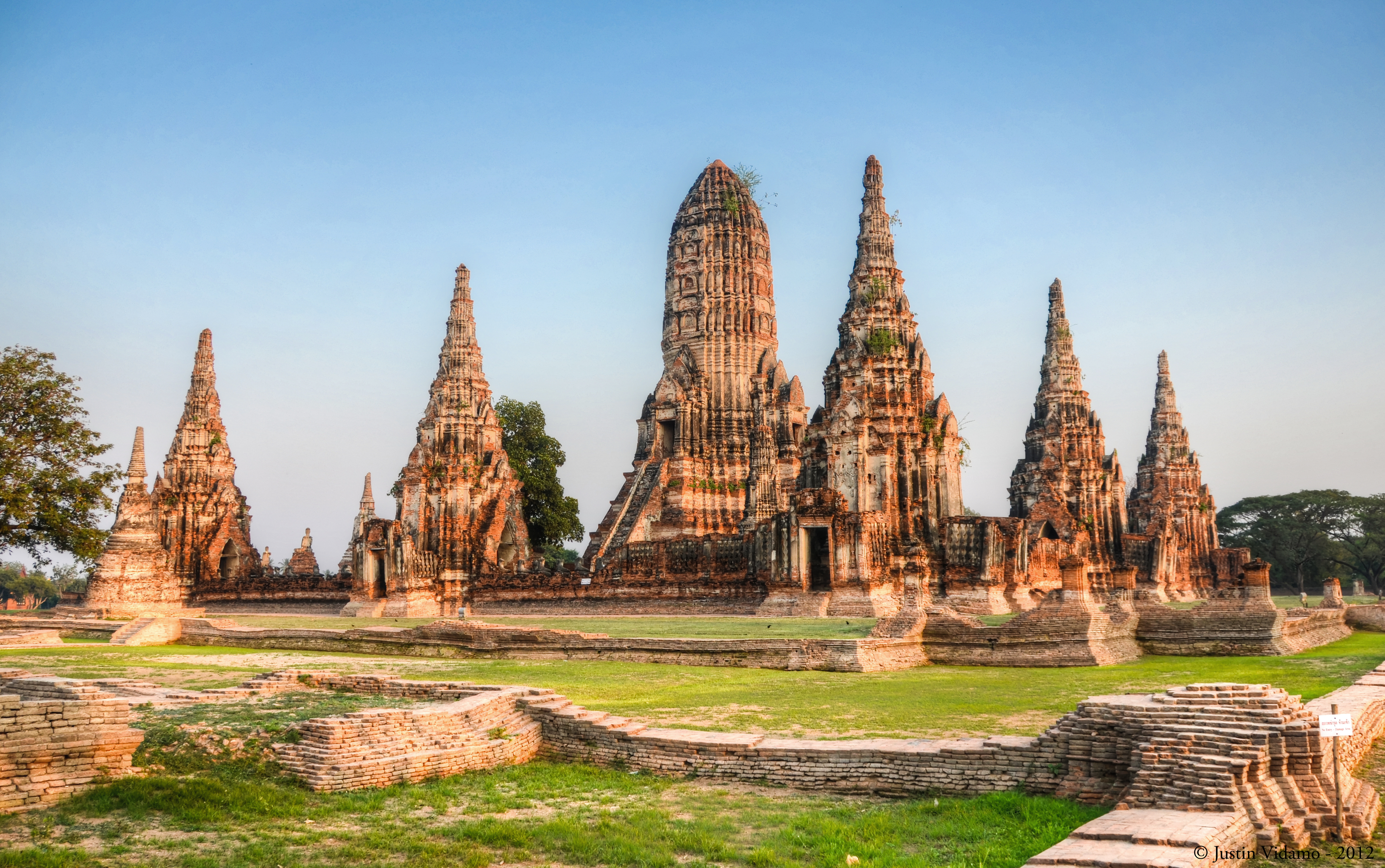 |
| Ayutthaya Ruins via Wikipedia |
A troubled time in Thai history followed, but by 1769 General Phraya Taksin had defeated his rivals and driven out the Burmese invaders. He became king and chose the city of Thonburi, across the river from Bangkok, as his capital. He worked to reestablish trade and also was interested in a cultural revival. Unfortunately, the strain of his office took its toll, and he went mad. His fellow general, Chakri, became Rama I in 1782, and moved the capital to Bangkok. His grandson, King Mongkut or Rama IV, is the king shown in the films The King and I and Anna and the King. Mongkut spoke Latin and English, as well as 5 other languages. Both King Mongkut and his son King Chulalongkorn (who reigned from 1868-1910) instituted many reforms. King Mongkut opened new waterways and roads and instituted new laws protecting women and children's rights. King Chulalongkorn freed the slaves and introduced schools, railways, Thailand's first post office, and a civil service system.
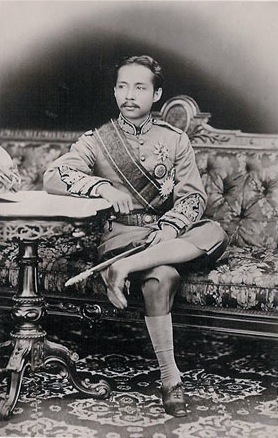 |
| King Chulalongkorn |
Rama VI or King Vajiravudh, who reigned from 1910 to 1925, sent 1300 Thai troops to France in 1918 to show Thailand's support for the Allies in World War I. During the reign of Rama VII or King Prachadhipok, the bloodless Revolution of 1932 transformed the country from an absolute monarchy to a constitutional monarchy patterned after the British model. The king outlawed polygamy in 1934, shortly before abdicating and retiring to Britain. His 10 year-old nephew, Ananda Mahidol was appointed as his successor. In 1939 the country's official English name was changed from Siam to Thailand.
There was sharp conflict between various factions of the government, and the military faction came into power with Prime Minister Plaek Phibunsongkhram. The government, though nominally a constitutional monarchy, was ruled by the military.
 |
| Thailand's Grand Palace which served as the home of the kings from 1782-1946 (via Wikipedia) |
In January 1941, Thailand invaded Indochina to recover certain areas which once belonged to Thailand. This sparked the Franco-Thai War. The well-equipped Thais quickly took Laos from the Vichy French and attempted to invade Cambodia. The French counterattacked two Thai-held villages on January 16th; this lead to a very fierce battle, but the French were eventually forced to retreat. The Thai pursuit was checked by French artillery. The next day, the French fleet engaged a Thai naval detachment in the Battle of Ko Chang and scored a decisive victory, sinking 2 torpedo boats and 1 ship. On January 24th and 28th, Thai bombers raided the French. Japan volunteered to mediate the conflict, and on the 31st a ceasefire was signed. On May 9th, a peace treaty was signed in Tokyo in which the French, coerced by the Japanese, ceded disputed border territories to Thailand.
On December 8, 1941, shortly before the strike on Pearl Harbor, the Japanese demanded permission to move their troops through Thailand to the Malayan frontier. Thailand did not respond to the Japanese ultimatum, and Japanese forces invaded Thailand. Thai and Japanese troops clashed for 8 hours until the Thai prime minister ordered an armistice, granting Japan permission to use Thailand as a base for the invasion of Malaya. On December 21st, an alliance was signed with the Japanese, and on January 25, 1942, Thailand declared war on the United States and Great Britain. However, the Thai ambassador to the United States Seni Pramoj refused to deliver the declaration of war, and so the United States refrained from declaring war on Thailand.
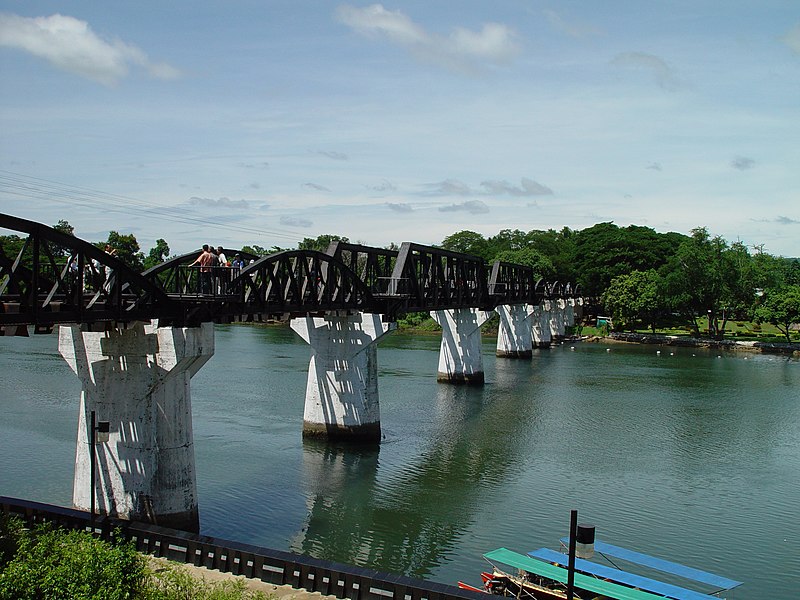 |
| The Bridge Over the River Kwai in 2004 (via Wikipedia) |
The Japanese built the Burma Railway, spanning from Bangkok, Thailand to Rangoon, Burma using forced labor in 1943. Approximately 160,000 Asian workers and 60,000 Allied POWs worked on the railway; of these 90,000 Asians and 60,000 POWs died as a direct result of the construction. The construction of the railway is counted as a war crime committed by Japan. The film Bridge on the River Kwai, though mostly fictional, was based on the construction of the railway. Conditions were, in fact, much worse than what was depicted in the movie.
Ambassador Seni Pramoj organized the Free Thai Movement which provided the Allies with valuable intelligence, and was the only resistance organization to use its own fighter aircraft in World War II. The Tham Seree Thai cave in Sakon Nakhon Province was used by the group to store supplies, and is currently an historical attraction. The resistance movement was aided some members of the Thai royal family as well as certain government officials.
After Japan surrendered in 1945, Thailand was forced to pay reparations in the form of rice sent to Malaya on the demand of the British. Thailand also had to return all territories won in the Franco-Thai war to France. King Ananda Mahidol, who was in Europe during World War II, was able to return to Thailand. Unfortunately, the king died of a gunshot wound under mysterious circumstances. His younger brother, Bhumibol Adulyadej, became King Rama IX on June 9th, 1946. He is now the world's longest-serving current head of state and the longest-reigning monarch in Thai history.
 |
| King Bhumibol and Queen Sirikit |
In 1947, a military coup ousted the government of the time and led to 30 years of military dictatorship. In 1973 democracy was reinstated for a short time, but the military took over again in 1976. For most of the 1980s Prem Tinsulandond (who was affiliated with the military) served as Prime Minister. He was democratically inclined and restored parliamentary politics. In 1988 General Chatichai Choonhaven was elected to replace him. In 1991, the 17th military coup since 1932 occurred, and civilian Anand Panyarachun became prime minister.
In 1992, General Suchinda Kraprayoon was elected. The country was very divided, and during the"Black May" of '92 nearly 200,000 people protested in Bangkok, demanding Suchinda's resignation. A military crack-down ensued, which resulted in 52 confirmed deaths and many disappearances and injuries. The Thai Royal Family, fearing a civil war, appeared on television and called for an end to the violence. King Bhumibol summoned Suchinda and the leader of the pro-democracy protesters, Chamlong. The site of both men together on their knees (as royal protocol requires) before the king as he demanded an end of the conflict and pleaded for peace quieted the nation. Suchinda resigned; Chamlong told the demonstrators to return to their homes, and new elections were held.
The 1997 Asian financial crisis began in Thailand when the Thai baht collapsed. The economy began to recover in '99 after economic reforms.
In 2003, 2000 suspects were killed in an anti-drug crack-down. The government blamed these killings on criminal gangs, but certain groups blame the deaths on the government. In 2004, Islamic militants killed over 600 people in terroristic attacks in Southern Thailand, and martial law was instituted in the area of the attacks. The insurgency continued with bombing attacks in 2005. Coordinated attacks on June 16, 2006 hit 40 government buildings. Overall, thousands have been killed in the conflict. In February 2013 the Thai government and Muslim separatists of southern Thailand signed their first-ever peace talks agreement.
Thailand was affected by the 2004 Indian Ocean tsunami. Over 5,000 Thais lost their lives as a result of the storm. In 2005, the bird flu, H5N1, threatened an outbreak, killing 14 people.
The latest Thai military coup occurred in September 2006. By August 2007 a new constitution was approved by the military leaders and popular vote, and February 2008 saw the return of civilian rule with a democratically elected government. But the political crisis was not over. From September 2008 into 2012, there were protests and violent clashes between members of the Thai political parties.
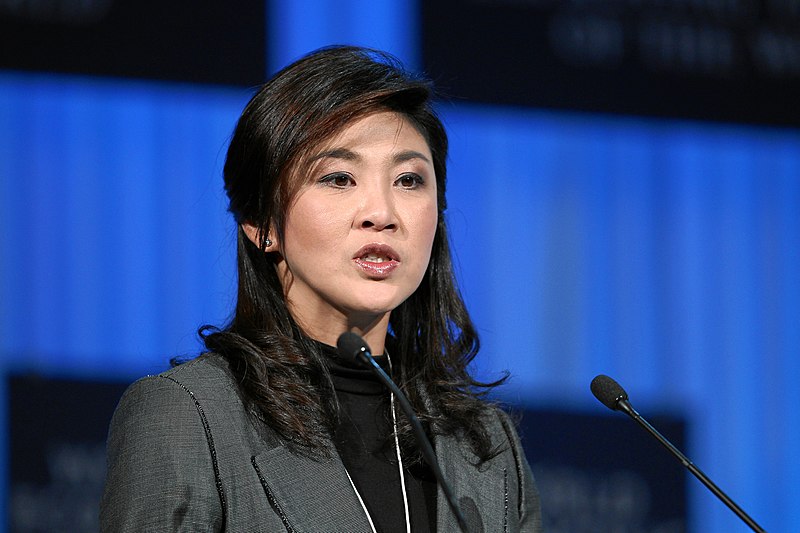 |
| Prime Minister Yingluck Shinawatra (the first woman Prime Minister of Thailand) via Flickr |
The Thai government under Prime Minister Yingluck Shinawatra has recently been endeavoring to balance the budget and reduce the nation debt. However rubber and rice farmers launched protests demanding increased subsidies, with approximately 12,000 farmers blocking roads and railways and threatening to shut down city halls in August and September. The government gave in to the farmers demands, paying $681 million directly to rubber-growers' bank accounts and spending over $8.5 billion to buy rice from the rice-growers at above-market prices.
The People and Culture
Thailand has a population of 66,720,153. 75% are Thai, 14% Chinese, and 11% are from various other ethnicities. Buddhism is the predominant religion: 94.6% of the people are Buddhist, 4.6% Muslim, 0.7% Christian, and 0.1% other religions.
Thailand has a GDP of $365.6 billion. 12.3% comes from agriculture (rice, cassava, rubber, corn, sugarcane, coconuts, and soybeans), 43.6% from industry (tourism, textiles, agricultural processing, cement, computers and parts, etc), and 44.2% from services. The country is the world's second-largest tungsten producer and third-largest tin producer. The unemployment rate is only 0.7%; 7.8% of the population live below the poverty line. The GDP per capita is $5,473.75, and the public debt is 44.5% of the GDP. (See the CIA World Factbook)
Thailand's literacy rate is 93.5%. Education is compulsory up to the age of 14, and the government provides public schooling for children up to the age of 17. Many students attend private schools and homeschooling is legal.
The traditional way of greeting for both men and women is the "wai," in which the younger person bows his head with his hands pressed together as if in prayer to show respect and the older person responds in similar fashion. Thais usually speak softly and avoid confrontations. Thailand is also known as the land of smiles. The head is considered sacred, and thus touching someone's head is considered very rude. Similarly, the feet are considered "dirty," so shoes must be taken off when entering a house. Thais are generally very neat and clean people. They also place emphasis on self-control, and emotions--especially anger--are not displayed in public.
Thailand is the world's largest exporter of rice, and rice is an essential element of Thai cuisine, eaten at almost every meal. Thai food is known for being spicy.
Tourism
Bangkok, Thailand is home to the Samutprakarn Crocodile Farm and Zoo, the largest crocodile farm in the world with over 100,000 crocodiles. The crocodile farm boasts the world's largest captive crocodile, Yai, who is 6 meters (19 feet, 8 inches) long and weighs 2465 pounds. But if, perchance, visiting with crocodiles doesn't suite you, there are many other options.
| Ko Chang Beach via Wikipedia |
Divers enjoy visiting the Similan Islands and various other locations in Thailand where there are beautiful coral reefs. Rock climbers can practice their sport on the Ri Leh Cliffs, and shoppers can visit the Chatuchak Weekend Market, the largest weekend market in the world with 15,000 stores.
| Thiawand Wall in Rai Leh via Wikipedia |
Nature lovers can visit rainforests and see elephants, monkeys, birds, snakes, and deer; see the Bangkok Aquarium, explore Phra Nang Diamond Cave, or tour the Nong Nooch Tropical Botanical Garden which covers 500 acres. There are also beautiful white sandy beaches. Waterfalls can be found throughout the country. History buffs can visit the Ayutthaya ruins, the Bangkok National Museum, the Grand Palace, many historical Buddhist temples, and the Phru Phra Bat Historical Park.
.jpg/800px-Nong_Noogh_Garden(1).jpg) |
| Nong Nooch Botanical Garden |
Thailand is a truly beautiful and exotic country; it has a rich history and is filled with natural wonders, friendly people, and fantastic Oriental architecture.




















